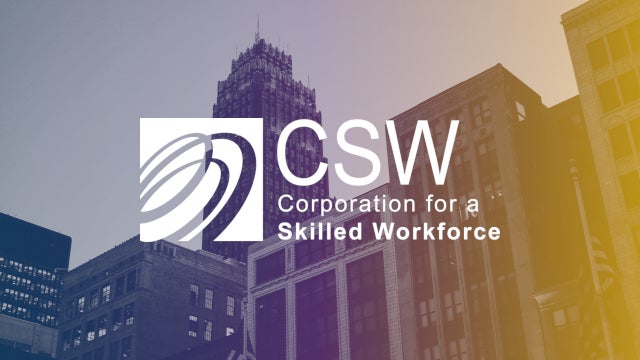As policymakers grapple with the profound implications of technology and automation on the American workforce, U.S. companies not only must contribute to the policy dialogue but also must take the lead in helping workers acquire new skills and education throughout their careers. Unfortunately, employer-provided worker training is on the decline. Since the mid-1990’s, the percentage of workers that received employer-sponsored or on-the-job training fell 42 percent and 36 percent, respectively. Over the last decade, employer spending on training as a share of the economy has been cut in half. This decline is widespread, across industries, occupations, and demographic groups. Over this same time period, the most effective programs, which combine on-the-job learning with mentorships and classroom education, have fallen by 40 percent. An Accenture survey shows that only one in five workers received employer-provided training in the last five years.
To keep pace with technological advances and establish a culture that values workers, companies must provide employees with high quality training programs. Research indicates that workers are more likely to stay with an organization that invests in them, even if they are acquiring skills that make it easier for them to find new jobs elsewhere. Yet, there is evidence that businesses continue to underestimate the benefits of training. When companies look to cut costs, employee training programs can be an easy target.
In the face of this discouraging trend, we note the possibility of a counter-trend: companies, like General Electric, Amazon, and AT&T, are starting to increase investment in worker training programs.
In March, GE announced its goal to train more than 150,000 global supply chain employees to “fill gaps” in [the] Digital Industrial Workforce. The “Brilliant Learning” curriculum includes seminars, workshops, online courses and a series of immersion boot camps on lean manufacturing practices, advanced manufacturing, and additive and other digital technologies.
Last week, Amazon announced it is creating 5,000 new, part-time, work-from-home jobs over the next year. Employees will have access to the Career Choice program, which is open to all associates after a year of work at the company, and pre-pays 95% of tuition and fees to earn certificates and associate degrees. Amazon claims that this program will target areas of high demand in the economy, regardless of whether the skills taught are relevant to a career at Amazon. Amazon also has made courses accessible by creating on-site classrooms at fulfillment centers.
Since 2013, AT&T has undertaken a major workforce retraining agenda – Workforce 2020 – spending $250 million on employee education and professional development programs and more than $30 million on tuition assistance annually. The initiative allows employees to self-assess skills gaps and enroll in online courses, certifications, and degree programs at a reduced cost. In some cases, the full cost of tuition is refunded upon completion of the training. The program was developed in partnership with Udacity and Georgia Tech. Since May 2016, AT&T employees had taken more than 1.8 million emerging-technology courses, with most employees spending five to ten hours a week on retraining.
In part, these employer-led efforts may be a response to a tight labor market that incentivizes companies to provide benefits in order to retain workers and increase loyalty. But ideally, these new programs reflect a recognition among major U.S. companies that they have a responsibility to provide pathways to career advancement and to help workers adapt to new technologies by continually developing new skills. At the Future of Work Initiative, we will be interested to see whether other companies announce or highlight similar efforts in the months and years to come.

